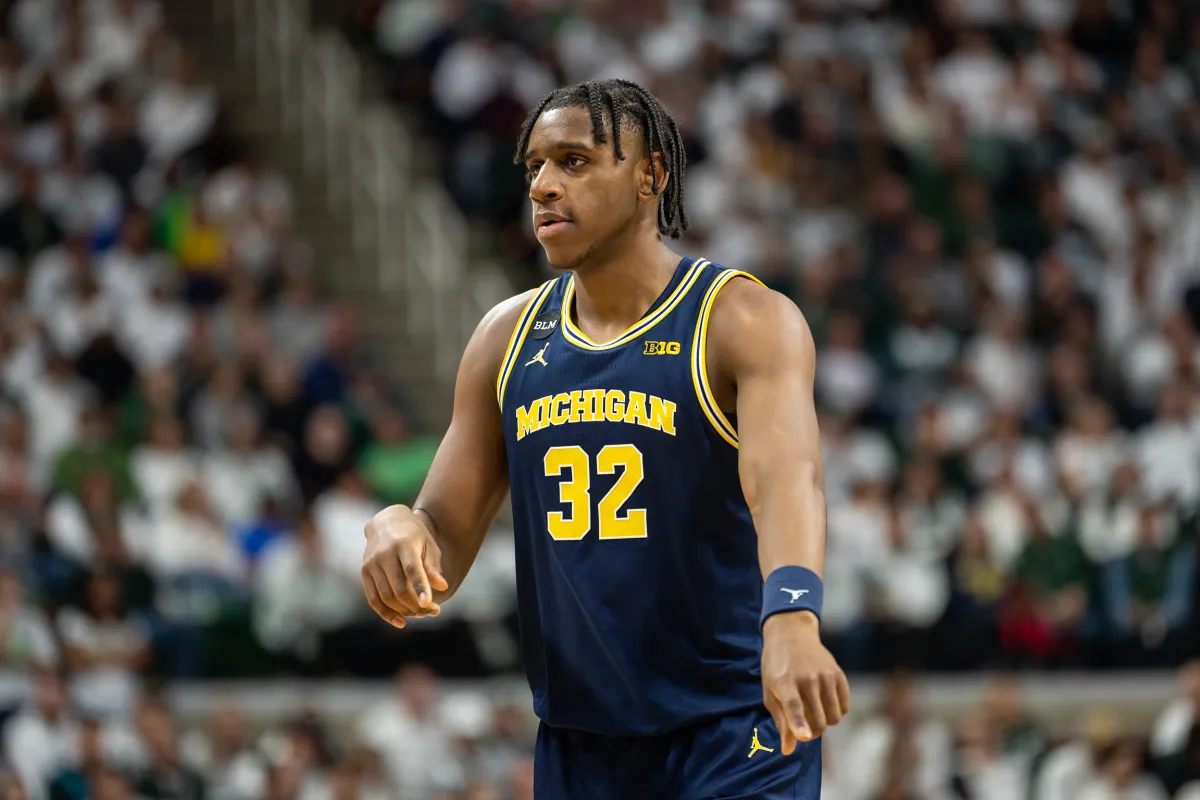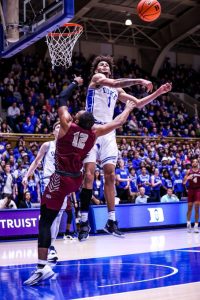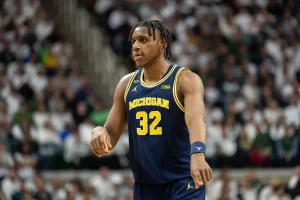
Connor Cagley, Big Sports Radio Basketball Writer
January 16, 2023
This is article three in a six part series on 2022 freshman class performance.
Coming into conference play across the country, we are examining how the 2022 freshman class is performing relative to expectations since the beginning of the season. We are seeing a differentiation of performance as the freshmen find out that results are more important than their ranking prior to arriving on campus. The groups of players can be broken down into three basic groups: those that are exceeding expectations, those that are meeting expectations, and those that are underwhelming.
This installment focuses on four players who are underwhelming relative to expectations.

Dereck Lively courtesy Duke Athletics
Dereck Lively, II came into the season as the number three recruit suiting up to play for the Duke Blue Devils. He was the highest rated post player in the nation, ranked one spot higher than Kyle Filipowski. So far this season it’s clear that Lively is the worse of these two bigs – and by a wide margin. He’s averaging just 3.9 points, 3.3 rebounds, and 0.9 assists per game. He’s only playing 16 minutes a game on average and that has led to a learning curve as he still looks unsure of his role for the Blue Devils.
While Lively is struggling in most aspects of the game he’s still able to affect the game as a shot blocker, averaging 1.8 blocks per game. This is where he is a much better player than the player starting ahead of him, Ryan Young, a fifth year senior out of Northwestern.
Lively will have a decision to make as to whether he will return to school or pursue opportunities in the NBA. He still has potential to be drafted in the late first/early second round this off season. If he returns and has a good sophomore year he could push himself back up into the lottery or even into the top five by performing to what was expected of him coming into this season.
Dariq Whitehead came into the season as the number two recruit. He was highly touted, just as Lively was. Unlike Lively, however, his season started rough even before season play. He fractured his foot in August, and had to miss some practice and game time while recovering from surgery.
He was known as a two way wing, with an elite ability to make shots and shoot the ball from deep. Thus far into the season, he’s struggling to shoot the ball. It hasn’t all been bad for Whitehead, though. He had a four game stretch in double figures, including two games where he hit four threes.
He’s struggled his last two games, but there is evidence he’ll be able to contribute to his team more than other players on this list. Due to his position and build he will likely still be good enough to be an NBA lottery pick for a team that’s willing to take a shot. It’s unlikely he’ll be back at the college level as a sophomore unless his play worsens as the season goes forward.
Chris Livingston came into the season as a starter for the number four ranked Kentucky Wildcats. He was another five star recruit who was expected to help the Wildcats contend for the NSEC title and hopefully be a high seed coming into the NCAA tournament. So far, Livingston and the Wildcats have disappointed relative to expectations.
He’s struggled both guarding quicker wings when playing the small forward position as well as guarding bigger players as a small ball power forward. He’s shot 34.6% from the three which has helped in some regards as Kentucky needs all the shooting success they can get.
Due to his limitations on the defensive end, he’s been passed up in the rotation by senior wing Antonio Reeves. Livingston is another guy who could make a serious leap in production if he returns to college. That said, he still has a chance to get drafted this year based on potential alone. If he stays at Kentucky for his sophomore season, he could definitely stand to work on his offensive package as well as his individual defense.

Tarris Reed Jr courtesy Emma Mati/Daily.
Michigan’s Tarris Reed, Jr. shot up the recruiting rankings after a fantastic senior season of high school, but thus far into his college career he has not lived up to that potential. That may be partly due to his poor fit with junior Hunter Dickinson. Neither excels at guarding traditional fours. And, while Dickinson can shoot from the three, it’s not an area where Reed has displayed comfort.
Even when Reed plays as a five, he’s not been as effective as was predicted. Where he’s been the worst is free throws – he’s currently shooting just 28% from the free throw line. This used to be considered a strength of him as a big man. Prior to his college experience, his ability to shoot the ball was seen as a plus, but thus far into the season he’s only been effective as a back to the basket big.
If Dickinson and Reed are both back for Michigan next season, they are going to need to get a lot more reps alongside one another prior to next season to work out the kinks we’ve seen so far this year.
The next installment in this series of six will focus on four more players who are underwhelming relative to expectations coming into the season.